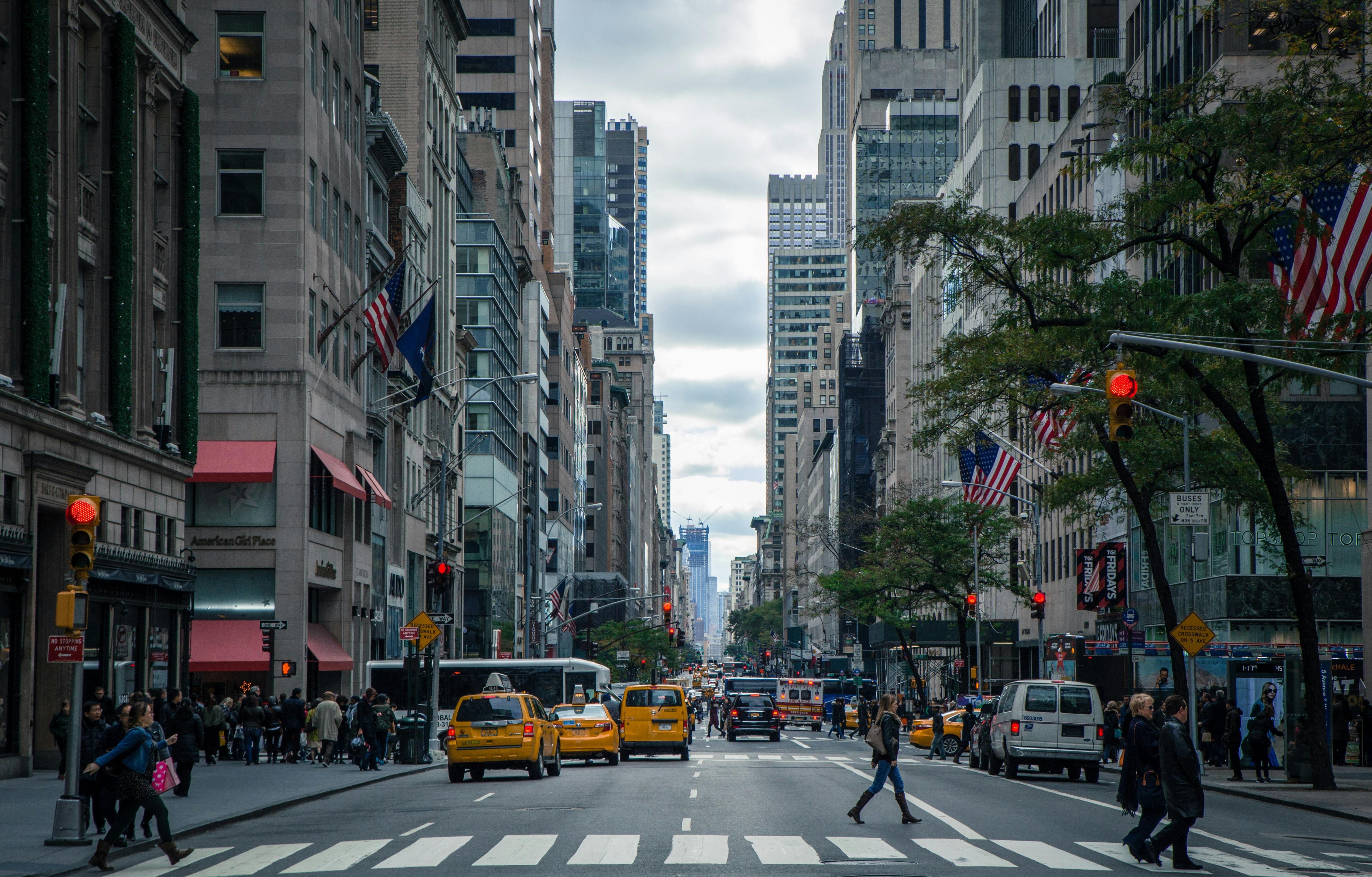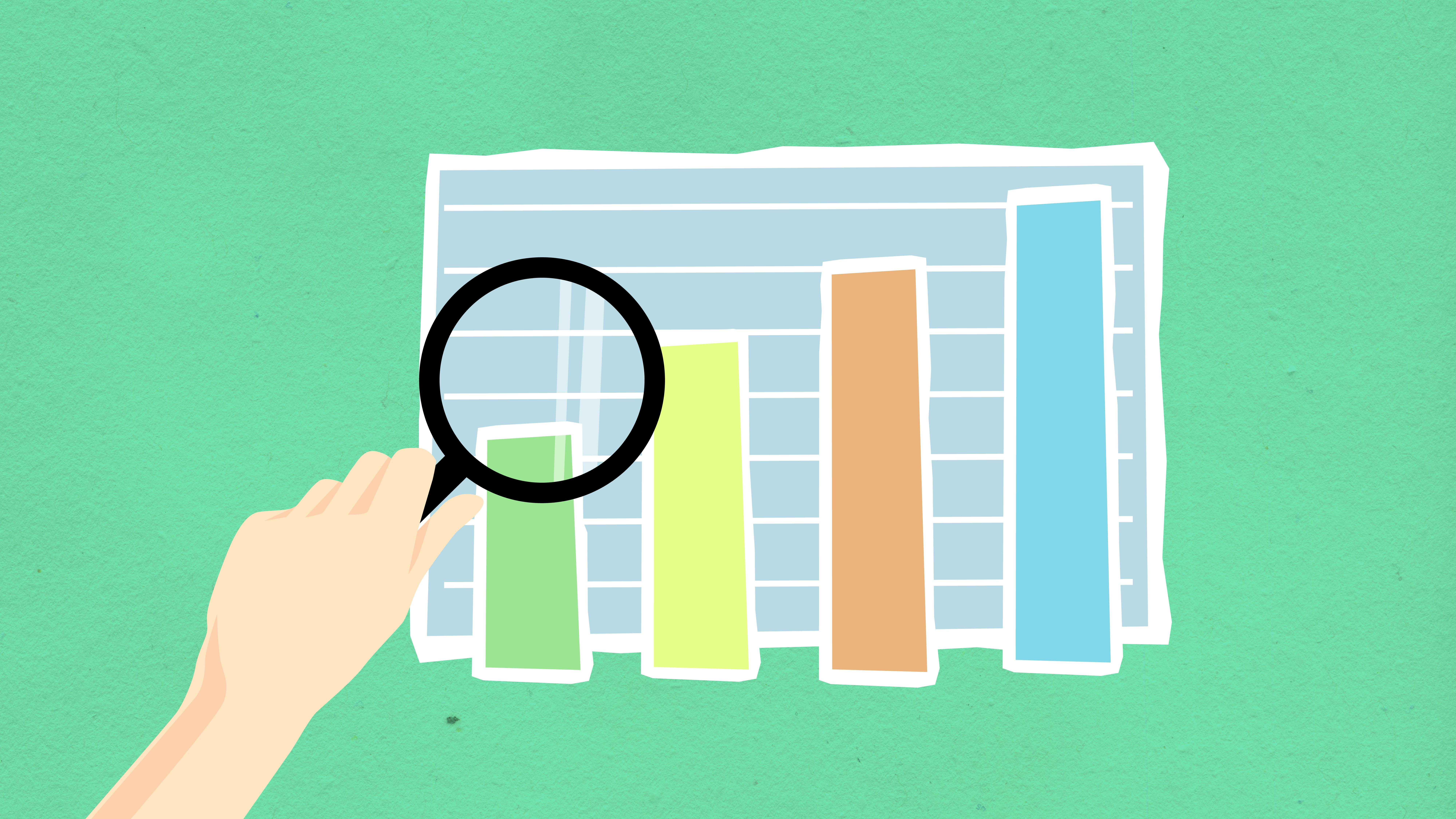
Decoding Traffic Bots: Unveiling Their Benefits and Pros & Cons
Traffic bots have become an increasingly prevalent phenomenon on the internet. These automated bots simulate human interaction and navigate websites like real users. With the potential to influence website traffic, it is essential to understand what they are and how they work.
A traffic bot, in simpler terms, is a software program designed to generate traffic to a particular website. While some traffic bots serve a legitimate purpose, such as analyzing website speed or testing security measures, others are malicious tools used to deceive and manipulate.
In terms of functioning, traffic bots operate by executing pre-programmed tasks on websites. These intricate programs mimic human behavior, enabling them to perform activities like browsing pages, scrolling, clicking links or buttons, filling out forms, interacting with chatbots, and more.
Not all traffic bots are created equal; they differ in their intentions and actions. On one hand, legitimate search engine bots (such as those from Google) crawl websites to index their content. On the other hand, there are fake or malicious traffic bots that artificially generate hits or inflate visitor counts for nefarious purposes.
Malicious traffic bots can be employed for various reasons. Some use them to gain a competitive edge by boosting website metrics, creating an illusion of popularity or increased engagement. Others aim to carry out click fraud or engage in spamming activities. In certain cases, spam bots might flood comment sections with pointless messages or target online polls to skew results.
Furthermore, some businesses resort to buying traffic from vendors who employ traffic bots. These services claim to provide genuine human traffic but instead deliver automated visits generated by bots.
Detection and prevention of traffic bot activity pose challenges due to the continuous advancement of bot technologies. Traditional methods like CAPTCHAs can be bypassed by sophisticated bots that imitate human-like actions and behave randomly to evade detection systems.
To combat traffic bot abuse effectively, advanced techniques such as machine learning algorithms or behavior-based analysis are being developed to distinguish legitimate users from bot-generated traffic. These tactics involve examining patterns, anomalies, and specific bot attributes to identify and filter incoming bot traffic.
To summarize, traffic bots are automated software programs that generate interactions on websites. While some have legitimate purposes, others exist to deceive and manipulate. The complexity of these bots necessitates the use of advanced techniques for identifying and preventing their misuse. Understanding traffic bots is crucial in maintaining genuine user engagement and combating fraudulent activities on the internet.
 The Dual Nature of Traffic Bots: Boosting vs. Skewing AnalyticsA traffic bot is a fascinating concept where its potential use can vary from boosting website traffic to skewing analytics. The dual nature of traffic bots revolves around these two purposes, each distinct in their intent and impact.
The Dual Nature of Traffic Bots: Boosting vs. Skewing AnalyticsA traffic bot is a fascinating concept where its potential use can vary from boosting website traffic to skewing analytics. The dual nature of traffic bots revolves around these two purposes, each distinct in their intent and impact.First, let's delve into the boosting aspect of traffic bots. When deployed for boosting, these bots are designed to generate artificial visits or interactions with a website or specific web content. The purpose here is to enhance the appearance of popularity or engagement on the site. By inflating the view counts, click-through rates, or other metrics, website owners aim to create an illusion of high activity and attract new organic visitors. Boosting bots primarily contribute to the "quantity" element rather than the quality of website traffic.
On the flip side, there is also a darker use for traffic bots — skewing analytics. In this context, individuals employ such bots with malicious intent to manipulate data or deceive advertisers and platforms reliant on accurate metrics. Skewing analytics involves artificially manipulating website statistics, user behavior patterns, or campaign performance indicators. By faking or distorting data, certain actors aim to receive undeserved benefits like increased ad revenue, improved rankings, or manipulating market perceptions.
Understanding the consequences is essential when considering either approach. While utilizing boost bots may lead to short-term gains in terms of higher traffic volume or increased visibility, it can be misleading for users and creates a shallow engagement experience. Dissecting traffic sources and identifying genuine visitors becomes difficult amid the inflated numbers generated by these bots. Moreover, relying solely on boosted numbers can obtusely lead to poor decision-making processes without accounting for actual user experiences.
Contrarily, using traffic bots to skew analytics introduces bigger issues concerning trust and integrity in online environments. Bot-driven manipulations distort reality, eroding credibility regarding important metrics upon which businesses base advertising investments and platform performance. Ultimately, this deception harms not only advertisers but also affects genuine content creators who are competing on an uneven battleground.
As the debate on the ethical use of traffic bots continues, transparency becomes vital for both website owners and analytical platforms. Open discussions accompanied by clear visitor authentication and validation processes are essential to maintain fair practices among online communities. It allows users to discern authentic activity from fraudulent ones furthering overall trust in the digital ecosystem.
In conclusion, traffic bots operate on a dual spectrum: bolstering website traffic or distorting analytics. The boost aspect pertains to manipulating online activity volume, while skewing analytics centers around falsifying web metrics for personal gains. Understanding the repercussions of each approach can help guide ethical choices and enhance trust within the digital space moving forward.
 Evaluating the Benefits of Traffic Bots for SEO Strategiestraffic bots are computer programs designed to imitate human behavior and generate automated traffic to a website. When it comes to evaluating the benefits of using such traffic bots for SEO strategies, there are several factors to consider.
Evaluating the Benefits of Traffic Bots for SEO Strategiestraffic bots are computer programs designed to imitate human behavior and generate automated traffic to a website. When it comes to evaluating the benefits of using such traffic bots for SEO strategies, there are several factors to consider.Firstly, traffic bots can potentially increase the number of visits to a website, which could be seen as a positive aspect. Higher website traffic may result in increased visibility, exposure, and potentially more leads or sales. Increased traffic is generally considered an indicator of a website's popularity and relevance.
However, relying solely on traffic generated by bots can have downsides. Search engines like Google aim to deliver the best possible user experience by providing relevant and useful search results. If a website uses traffic bots to manipulate visitor numbers artificially, search engines may penalize it. This penalty can lead to lowered rankings or even banning from search results.
It is crucial to focus on organic and genuine traffic when optimizing SEO strategies. While traffic bots can generate an influx of visitors, these are typically not genuine users with genuine interest in the website's content or products. Such artificial traffic often has a high bounce rate (when visitors leave immediately after landing on a page), low engagement, and lacks conversion potential.
Moreover, using traffic bots might not align with ethical practices and business values. Since most bots imitate real users through various technologies, their usage might be viewed as deceitful and unethical. This can tarnish a website's reputation and credibility among users and industry peers.
Another consideration is that search engines continuously evaluate their algorithms to detect and mitigate manipulative practices like artificial traffic generation through bots. If caught using such techniques, the negative consequences could outweigh any temporary benefit brought by increased visitor numbers.
Overall, while there may be short-term advantages in generating increased traffic through bots, it is vital to prioritize authentic user experiences and engagement over artificially inflated numbers. Instead of relying on traffic bots for SEO strategies, investing time and effort into creating high-quality content, optimizing website design and user experience, and promoting the website through legitimate means can yield more sustainable and valuable results.
 The Risks of Using Traffic Bots on Your WebsiteUsing traffic bots on your website may seem like an enticing solution to boost your web traffic quickly and effortlessly. However, delving deeper reveals several substantial risks and detrimental consequences that can harm your website's reputation and long-term success. It is crucial to understand the potential hazards before considering the use of traffic bots.
The Risks of Using Traffic Bots on Your WebsiteUsing traffic bots on your website may seem like an enticing solution to boost your web traffic quickly and effortlessly. However, delving deeper reveals several substantial risks and detrimental consequences that can harm your website's reputation and long-term success. It is crucial to understand the potential hazards before considering the use of traffic bots.1. Bot Detection: One of the greatest perils of deploying traffic bots is the high probability of detection. Search engines, advertising networks, and other analytics services have sophisticated algorithms to detect abnormal patterns in traffic. Once identified as using a bot, your website may face penalties, including being de-indexed or facing restrictions on ad revenue.
2. Low Quality Traffic: Traffic bots typically generate automated visits that lack genuine user interactions. As a result, engagement metrics like time spent on page, conversions, and bounce rates will be abnormally skewed. This gives a false sense of success while bringing little value to your website. High-quality organic traffic from real users who are genuinely interested in your content or business outweighs low-engagement automated traffic anytime.
3. Ad Revenue Loss: If you monetize your website through ads, using traffic bots can lead to a loss of revenue. Ad networks often identify fraudulent traffic generated by bots and either refuse to serve ads or reduce the costs paid for such impressions/clicks. The subsequent impact on your earnings can significantly hamper the profitability of your online venture.
4. User Experience (UX) Damage: Artificially inflating traffic using bots disrupts user experience. Higher bounce rates resulting from bot-generated visits can signal search engines and human visitors alike that your website lacks appealing content or relevance. Real human users seeking information may eventually lose trust in discovering quality content amid artificially inflated metrics.
5. Negative SEO Impact: Implementing bots may negatively affect your Search Engine Optimization (SEO) endeavors. Search engines actively filter out spam and low-quality websites through their algorithms. Websites flagged for using traffic bots may be penalized or even blacklisted, which can diminish search engine rankings and organic visibility.
6. Wasted Resources: Implementing traffic bots consumes significant resources, both of time and money. Instead of dedicating these resources toward creating valuable content or improving user experience, they are diverted to setting up and maintaining bots. Investing these resources into legitimate marketing efforts will yield more sustainable results in driving genuine traffic and establishing a solid online presence.
7. Reputation Damage: Deploying traffic bots carries the risk of damaging your website's reputation. If users or competitors discover artificial inflation of your web traffic, it can undermine trust and credibility in your brand or business. Negative feedback, loss of credibility, and an overall tarnished reputation can take a significant toll on all aspects of your online presence.
In conclusion, utilizing traffic bots poses severe risks that outweigh the transient benefits they may provide. Building authentic website traffic based on high-quality content, organic reach, and genuine user engagement offers a far more effective strategy for long-term growth. Strive to attract real visitors who genuinely express interest in what you have to offer and work towards sustaining an organic user base that will contribute to the lasting success of your website.
 Traffic Bots and Web Security: A Guide to Safe Practicestraffic bots and Web Security: A Guide to Safe Practices
Traffic Bots and Web Security: A Guide to Safe Practicestraffic bots and Web Security: A Guide to Safe PracticesTraffic bots, also referred to as web bots or website traffic generators, have become a prominent topic in discussions surrounding web security. These powerful tools automate web browsing tasks while simulating human behavior to send genuine-looking traffic to websites. While traffic bots can be valuable for various purposes like SEO analytics and load testing, they also raise concerns regarding web security and ethical use. Here is everything you need to know about traffic bots and web security practices to ensure a safe online experience.
Understanding Traffic Bots:
Traffic bots are programs that imitate human interactions with websites. They navigate through web pages, follow links, fill out forms, and perform other activities. These bots can be beneficial for website owners as they help collect relevant data regarding website performance, identify vulnerabilities, and assess the overall user experience. Additionally, marketers often utilize such bots for statistical analysis, influencer partnerships, ad targeting, or simply increasing website traffic.
Ethical Use of Traffic Bots:
The ethical use of traffic bots is crucial to maintain fair competition and respect for others' digital properties. It is essential to employ them within legal boundaries to avoid violating any jurisdiction's laws or policies. Bot operators must obtain proper authorization from website owners before engaging in any activities that could potentially overload servers or compromise security measures. Respect for usage limits, permission-based collaborations, responsible reporting of vulnerabilities, and prompt compliance with any expressed restrictions are fundamental principles while using traffic bots ethically.
Web Security Risks Associated with Traffic Bots:
Using traffic bots unsafely or maliciously can pose significant risks to web security. Websites might experience numerous unfavorable outcomes:
1. Increased server loads: Traffic bots can overload servers by sending different requests simultaneously or rapidly generating excessive page views. This can lead to slowdowns, poor responses, or even server crashes affecting regular users' experience.
2. Vulnerability exploitation: Exploiting system vulnerabilities or sending invalid requests may enable traffic bots to gain unauthorized access to sensitive data or execute malicious commands.
3. Content theft: Traffic bots can scrape and duplicate website content, posing copyright concerns while causing reputational damage and financial loss for content owners.
4. Click fraud: Some traffic bots engage in click fraud by automatically clicking ads, manipulating PPC (pay-per-click) campaigns. This unethical behavior deceives advertisers, disrupts revenue streams, and skews marketing analytics.
5. Distributed Denial of Service (DDoS) attacks: Large-scale botnet-driven DDoS attacks cripple websites by overwhelming crucial infrastructure with massive traffic volumes from multiple sources. Traffic bots may contribute to such attacks if controlled by malicious actors.
Best Practices for Web Security:
To safeguard websites and user interests, it is essential to adopt best practices for web security when dealing with traffic bots:
1. Implement CAPTCHAs, rate-limiting measures, or behavior analysis systems to differentiate between human users and bots.
2. Regularly monitor server logs for suspicious IP addresses or unusual patterns indicating potential bot activity.
3. Utilize web application firewalls (WAF) to detect and block malicious traffic or SQL injection attempts by traffic bots.
4. Keep software and CMS platforms updated to minimize vulnerabilities that might be exploited by malicious bots.
5. Develop clear terms of service agreements, specifying actions strictly disallowed concerning the usage of traffic bots, while highlighting consequences for non-compliance.
By understanding the capabilities of traffic bots and implementing robust web security practices, website owners can safeguard their resources, maintain user trust, and create meaningful online experiences while preventing any abuse that may arise from unscrupulous utilization of these valuable tools.
 Traffic Bot Types Explained: Which One is Right for Your Site?traffic bot Types Explained: Which One is Right for Your Site?
Traffic Bot Types Explained: Which One is Right for Your Site?traffic bot Types Explained: Which One is Right for Your Site?When it comes to driving traffic to your website, one option that many people consider is using a traffic bot. Before you jump in, it's important to understand that not all traffic bots are created equal. Each type offers different advantages and disadvantages, catering to specific needs. By understanding the different types, you can choose the right one for your site.
1. Generic Traffic Bots:
These are the most common and basic type of traffic bots available. They generate traffic by sending multiple automated requests to your website, simulating real visitors. However, they lack targeting capabilities and often involve irrelevant and low-quality traffic. In some cases, using generic bots can negatively impact your site's reputation.
2. SEO Traffic Bots:
Targeting search engine optimization (SEO), these bots focus on boosting your website's rankings by generating organic-looking traffic. They mimic search engine algorithms and visit web pages naturally. SEO traffic bots can be beneficial if you're looking to improve your organic search visibility and potentially attract more genuine visitors.
3. Referral Traffic Bots:
If you want to increase referral traffic from specific sources, referral bots may be suitable for you. These bots simulate visits from referring websites or URLs you specify. This type of bot is beneficial if driving traffic from particular sources is crucial for your site's success.
4. Social Media Traffic Bots:
To enhance engagement and boost social media presence, social media traffic bots are designed specifically for generating traffic from popular platforms like Facebook, Instagram, or Twitter. They typically mimic user behavior such as clicks, likes, shares, and comments. Social media bots are ideal if your marketing strategy heavily relies on building a following and increasing engagement on social media.
5. Geo-Targeted Traffic Bots:
If your website targets specific regions or countries, geo-targeted bots allow you to generate tailored traffic according to geographical preferences. These bots offer a way to direct traffic from specific locations and can be especially useful if you are running region-specific campaigns or have localized content.
6. Bot Traffic Filtering Tools:
Sometimes, instead of using a particular type of bot, you can opt for a bot traffic filtering tool. These tools help identify and filter out any unwanted bot traffic that might be visiting your site. They rely on various parameters like IP addresses, user agent strings, patterns detection, and more to separate legitimate traffic from bot-generated visits.
Choosing the right traffic bot for your site depends on your unique goals and requirements. It's crucial to assess which type aligns best with your marketing objectives and the kind of traffic you need to drive to your website.
Remember, while traffic bots can provide initial boosts in numbers, focusing solely on generating artificial visits may compromise the real engagement you need for sustained growth. Employing other digital marketing strategies alongside consistent organic growth remains vital for building lasting success online.
 Measuring the Impact of Traffic Bots on User Engagement MetricsMeasuring the Impact of traffic bots on User Engagement Metrics is crucial for understanding the true effectiveness of traffic bots in driving user engagement. By examining several key metrics, we can gain insights into how traffic bots impact various aspects of user engagement. Here are some important considerations when measuring this impact:
Measuring the Impact of Traffic Bots on User Engagement MetricsMeasuring the Impact of traffic bots on User Engagement Metrics is crucial for understanding the true effectiveness of traffic bots in driving user engagement. By examining several key metrics, we can gain insights into how traffic bots impact various aspects of user engagement. Here are some important considerations when measuring this impact:1. Traffic Quality: Assessing the quality of traffic generated by bots is essential. Analyzing metrics such as bounce rate, time on site, and number of pages per session can help determine if bot-generated traffic exhibits characteristics indicative of genuine user engagement.
2. Conversion Rate: Monitoring the conversion rate helps determine whether desired user actions (e.g., signing up for a service or making a purchase) are taking place. A higher conversion rate suggests that bot-driven traffic is effectively engaging users and leading to desired outcomes.
3. Click-Through Rates (CTR): Evaluating the CTR across different pages and elements can indicate how traffic bots influence user engagement with the provided content. Using A/B testing or tracking CTR variations between organic and bot-generated traffic can provide valuable insights.
4. Average Session Duration: Examining how long users from bot-generated traffic stay on a website can highlight whether they are truly engaging with the content or simply delivering brief interactions, impacting session duration metrics.
5. Return Visits: Analyzing if users from bot-generated traffic make repeated visits indicates the extent of their interest in the website's offerings. Repeat visitors from these sources might imply genuine engagement, while a lack of repeat visits could indicate a more superficial interaction.
6. Interaction Depth: Investigating user interactions, such as comments, shares on social media, or participation in online forums, enables understanding if traffic generated by bots contributes meaningful engagement or merely passive presence.
7. Goal Flow Analysis: Utilizing goal flow analysis helps visualize and understand how users interact with a website step-by-step towards a particular goal—whether initiated from bot visits or organic ones—aids in comprehending the user engagement journey.
8. Cohort Analysis: Comparing the behavior and engagement metrics of bot-generated traffic against other traffic sources or cohorts can offer important context for a clearer understanding of how these bots affect user engagement specifically.
9. Time Spent on Page: Observing the average time users spend on specific pages can provide insights into the captivating power of bot-generated traffic towards different types of content, aiding in understanding what content drives deeper engagement.
10. Heatmap Analysis: Utilizing tools that generate heatmaps, particularly for sessions delivered via bots, can illustrate the intensity and quality of user interactions on pages, showing where and how their attention is focused.
11. Social Media Engagement: Assessing social media engagement metrics such as likes, comments, shares, or click-throughs on posts shared through bot-driven traffic can help measure their impact beyond website-specific metrics.
12. Analyzing Long-term Trends: Monitoring trends in key engagement metrics over time allows for a comprehensive evaluation of the true impact of traffic bots by revealing patterns that may not be easily observable through isolated measurements.
Taking all these measurements into consideration helps us understand not only whether traffic bots are generating higher traffic numbers but also sheds light on the actual quality of engagement they contribute to websites or online platforms. Ultimately, deciphering the impact on user engagement helps sustain efforts towards enhancing user experience and achieving desired outcomes more effectively.
 Are Traffic Bots Illegal? Navigating the Legal Landscapetraffic bots are automated software programs designed to simulate human traffic on websites or other online platforms. While the subject of employing traffic bots often raises questions about their legality, navigating the legal landscape can be confusing because it varies across different jurisdictions.
Are Traffic Bots Illegal? Navigating the Legal Landscapetraffic bots are automated software programs designed to simulate human traffic on websites or other online platforms. While the subject of employing traffic bots often raises questions about their legality, navigating the legal landscape can be confusing because it varies across different jurisdictions.One crucial aspect to consider is that not all traffic bots are illegal. It depends on the intention behind their use and the actions they perform. When used ethically and within legal boundaries, traffic bots can serve legitimate purposes, such as performing website analysis, collecting data, or testing a site's performance under heavy load.
However, the line between legal and illegal usage becomes blurred when traffic bots engage in activities that are explicitly disallowed or unethical. Here are some factors to keep in mind while exploring their legality:
1. Unauthorized Impersonation: Traffic bots that simulate human behavior by imitating real users without proper consent may violate applicable laws. It's essential to ensure that any use of traffic bots does not infringe upon an individual's rights or privacy.
2. Automated Attacks: Using traffic bots for hacking, click frauds, DDoS attacks, or any activity that causes harm or disruption is strictly illegal. Such malicious activities can have severe consequences both legally and ethically.
3. Violation of Website Terms of Service: Many platforms have specific terms that outline the acceptable behavior for users. Utilizing traffic bots to artificially inflate visitors, manipulate statistics, or misrepresent performance often breaches these terms and could lead to legal consequences.
4. Unfair Competition or Copyright Infringement: Employing traffic bots to manipulate website rankings, scrape copyrighted content without permission, or engage in fraudulent advertising practices may lead to legal issues related to unfair competition and intellectual property infringements.
Furthermore, local laws governing digital activities play a significant role in determining a bot's legality. Jurisdictions differ regarding what constitutes acceptable use, so it's crucial to consult the rules specific to your region before engaging traffic bots.
In conclusion, traffic bots themselves are not inherently illegal. It's the actions they perform and the purposes they serve that determine their legality. Using traffic bots ethically and responsibly, while obeying relevant laws and terms of service, is essential for navigating the legal landscape surrounding these tools effectively.
 Enhancing Digital Marketing Efforts with Smart Use of Traffic BotsDigital marketing has revolutionized the way businesses connect with customers. However, it can be a challenging task to attract high-quality traffic to your website. This is where traffic bots come into play. Traffic bots are advanced software programs designed to imitate human behavior and generate automated web traffic. By using traffic bots cleverly, businesses can strengthen their digital marketing efforts in several ways.
Enhancing Digital Marketing Efforts with Smart Use of Traffic BotsDigital marketing has revolutionized the way businesses connect with customers. However, it can be a challenging task to attract high-quality traffic to your website. This is where traffic bots come into play. Traffic bots are advanced software programs designed to imitate human behavior and generate automated web traffic. By using traffic bots cleverly, businesses can strengthen their digital marketing efforts in several ways.Firstly, traffic bots can assist in boosting website SEO (Search Engine Optimization). Through generating organic web traffic, these bots help increase the visibility of websites and improve their ranking on search engine result pages. By driving more visitors to your site, you have a higher chance of increasing your search engine rankings.
Furthermore, traffic bots aid in enhancing website analytics. They provide detailed insights into visitor behavior by tracking various metrics such as page views, session duration, bounce rates, and referral sources. With this information, businesses can understand their audience better and optimize their digital marketing strategies accordingly.
Traffic bots are also instrumental in testing website performance and conversion rates. By simulating real user interactions, they provide valuable data on user experience and identify any technical glitches or bottlenecks on the website. This enables businesses to improve their overall website performance and ensure smooth navigability for visitors, resulting in higher conversion rates.
Modern traffic bots offer geo-targeting capabilities, enabling businesses to direct traffic from specific regions or demographics. This feature proves advantageous for local businesses that primarily serve customers in a particular geographic area. Geo-targeted traffic helps generate leads that are more likely to convert into actual customers.
In addition to these benefits, the smart use of traffic bots can aid in social media marketing efforts. By directing bot-generated traffic towards social media accounts and landing pages, businesses can enhance their reach and impact on platforms like Facebook, Instagram, Twitter, etc. This increased engagement can help build brand authority and attract organic followers interested in the products or services offered.
However, it is crucial to use traffic bots responsibly to avoid any negative consequences. Usage of bots should comply with ethical standards and guidelines set by search engines and social media platforms. Overuse or misuse of traffic bots could result in penalties such as decreased search rankings, ad platform bans, or even legal repercussions. Therefore, businesses must exercise caution and use traffic bots in a controlled and measured manner.
In conclusion, traffic bots present immense potential for enhancing digital marketing efforts. With their ability to drive organic traffic, improve SEO, provide valuable website analytics, and assist in social media marketing, traffic bots can be valuable assets for businesses aiming to thrive in the highly competitive digital landscape. However, it is crucial to utilize such tools responsibly and ethically while adhering to platform guidelines to reap the optimum benefits.
 Spotting the Difference: Human vs. Bot Traffic Analysis TechniquesDetecting and distinguishing between human and bot traffic bot is crucial when analyzing website traffic patterns. It presents challenges because advanced bots can closely replicate human behavior, making it increasingly difficult to differentiate between the two. However, there are several noteworthy techniques used for spotting the differences between human and bot traffic.
Spotting the Difference: Human vs. Bot Traffic Analysis TechniquesDetecting and distinguishing between human and bot traffic bot is crucial when analyzing website traffic patterns. It presents challenges because advanced bots can closely replicate human behavior, making it increasingly difficult to differentiate between the two. However, there are several noteworthy techniques used for spotting the differences between human and bot traffic. Analyzing Behavior:
One way to spot the difference between humans and bots is by observing their behavior on a website. Humans often exhibit diverse and unpredictable browsing patterns, such as random page visits, idle time, varied click rates, scrolling, multiple tab usage, or interacting with forms. Conversely, bots tend to have repetitive patterns, stick to limited paths, hop rapidly from page to page without pausing or scrolling, and avoid interacting with forms.
Browser Identification Flags:
Examining various flags that browsers possess can also help differentiate between humans and bots. Human visitors usually have well-defined browser characteristics, including different versions, diverse plugins/extensions, varying screen resolutions, accept-language headers reflecting their languages, cookies presence, and sometimes add-ons for privacy concerns. Bots may show similar headers repeatedly or lack certain identifiable traits.
Mouse Movement and Cursor Analysis:
Careful analysis of mouse movement can be beneficial for distinguishing between human users and bots. Humans display non-linear mouse movements as they navigate through web pages. They can move their cursors naturally across the screen with minor corrections and pauses, often moving at irregular speeds whereas bots tend to traverse more linear paths with fixed speed.
Screen Interaction Patterns:
Screen interaction patterns offer further insight into assessing the nature of website visitors. Humans usually exhibit natural scroll behavior by spending different amounts of time reading content and using various scrolling speeds or bounce rate indicators. Moreover, interactions like hovering over elements or clicking on different areas of interest reflect human engagement. On the other hand, bots might not engage in these behaviors or strictly follow specific patterns devoid of randomness.
Network Traffic Analysis:
Analyzing network traffic can aid in spotting differences between human and bot traffic. Bots often exhibit robotic patterns by simulating predefined timings between requests, uniform headers or IP addresses, repeated User Agents, steady request rates, or host access patterns that defer from primetime web activities. Humans, however, generate more diverse network traffic with varying timestamps, dynamic IPs, and traffic spikes during peak usage hours.
Machine Learning Techniques:
Utilizing machine learning algorithms can greatly enhance the accuracy of distinguishing humans from bots. These techniques involve analyzing numerous features such as HTTP headers, browser characteristics, playback attributes, JavaScript execution, time-based activity patterns, and many more. By training models on known and labeled traffic data, one can build classifiers that can effectively identify human or bot behavior.
Although traffic analysis techniques are evolving to counter sophisticated bots, it is important to continually evolve identification strategies as bots become more sophisticated over time. Maintaining awareness of emerging trends in bot technology and staying ahead with advanced methods for analyzing website visitors enables better protection against malicious activities and ensures valuable insights about user behavior.
 Mitigating Negative Effects of Malicious Traffic Bots on E-commerce Sitestraffic bots are computer programs designed to send automated web traffic to target websites. While they can sometimes serve legitimate purposes, such as improving website performance during stress testing, there are also malicious traffic bots that can cause a range of negative effects on e-commerce sites. Here are some key points to help mitigate these negative effects:
Mitigating Negative Effects of Malicious Traffic Bots on E-commerce Sitestraffic bots are computer programs designed to send automated web traffic to target websites. While they can sometimes serve legitimate purposes, such as improving website performance during stress testing, there are also malicious traffic bots that can cause a range of negative effects on e-commerce sites. Here are some key points to help mitigate these negative effects:1. Bot detection and identification: Implement robust bot detection mechanisms to differentiate between genuine human visitors and malicious traffic bots. Several techniques, including analyzing IP addresses, user agent strings, request patterns, and JavaScript challenges, can help accurately identify bots.
2. Rate limiting and blocking: Utilize rate limiting techniques to restrict excessive requests from the same IP address or user agent within a specific timeframe. This helps control the flow of traffic and prevents overloading the system. By continuously monitoring suspicious activity patterns, you can proactively block identified malicious bots from accessing your e-commerce site.
3. Captchas and challenges: Deploy CAPTCHA or other challenge-response mechanisms at critical points in user interactions (e.g., login forms, account creation) to verify if it is a human interacting with your site. By incorporating tests that are difficult for bots to pass (e.g., image recognition or puzzles), you can deter malicious bots from further accessing your site.
4. IP blacklisting and reputation services: Maintain a list of known offending IPs associated with bot activity, which can be continuously updated using threat intelligence feeds and community collaborations. Consider integrating with IP reputation services to automatically block traffic coming from IPs with a history of nefarious activity.
5. Traffic analysis and anomaly detection: Regularly monitor website traffic patterns and look out for anomalies that might suggest malicious bot activity. Behavioral analysis tools can help recognize unusual patterns in user behavior, such as rapid-fire clicks or identical navigation paths, enabling prompt intervention.
6. Content delivery network (CDN): Implementing a CDN for your e-commerce site can aid in handling sudden spikes in legitimate traffic while simultaneously mitigating the impact of malicious bots. CDN services often include security features such as bot protection, distributed caching, and traffic filtering.
7. Continuous monitoring and incident response: Establish dedicated system logs, use log monitoring tools, and conduct regular vulnerability assessments to proactively detect potential bot-related threats. Implement an incident response plan to rapidly react to emerging harm or unauthorized access attempts.
8. Educate users: Taking preventive measures goes beyond deploying technical solutions. Educating your users on the risks associated with interacting with suspicious sites or clicking on potentially dangerous links can help diminish successful bot attacks.
9. Regular software updates: Keep your e-commerce platform and associated plugins up to date to minimize vulnerabilities often exploited by malicious bots for unauthorized access or infiltration attempts.
10. Collaboration with industry peers: Engage with other businesses and organizations within the e-commerce industry to share insights, best practices, and reliable threat intelligence related to bot detection, mitigations, and trending attack vectors.
Combining these preventive measures can help e-commerce site administrators minimize the negative effects caused by malicious traffic bots, ensuring smoother operations, a better user experience, and stronger overall security.
 Beyond Numbers: How Traffic Bots Influence Conversion Ratestraffic bots have become a significant topic of discussion in relation to how they can influence conversion rates. When looking beyond mere numbers, it is crucial to understand the various ways traffic bots can impact these rates.
Beyond Numbers: How Traffic Bots Influence Conversion Ratestraffic bots have become a significant topic of discussion in relation to how they can influence conversion rates. When looking beyond mere numbers, it is crucial to understand the various ways traffic bots can impact these rates.Firstly, traffic bots are automated tools that simulate human behavior on websites by generating visits and interactions. This initially creates a surge in website traffic, which might be enticing for website owners seeking higher stats. However, it's important to note that while traffic numbers may increase, not all visitor interactions may be genuine or beneficial.
One significant factor influenced by traffic bots is bounce rate. Bounce rate refers to the percentage of visitors who navigate away from a page without exploring other pages on the site. Traffic bots often have high bounce rates because their programmed behavior typically involves briefly browsing through one page before leaving. Consequently, an artificially inflated bounce rate can harm conversion rates by potentially giving the impression that visitors are uninterested or dissatisfied with the website.
Conversion rates are also affected by traffic quality. While bots can create a sudden spike in visitor numbers, these visitors often lack genuine interest or intent to engage with the website's content or purpose. Genuine leads and customers bring higher chances of successful conversions, and when traffic bots make up a significant portion of website visitors, it diminishes the opportunity for true conversions.
Additionally, traffic bot activity can skew data reports and analytics. This misleading data hinders accurate analysis of user behavior and engagement metrics, making it difficult to identify areas for optimization or user experience improvement. As a result, decision-making based on such flawed data may lead to ineffective strategies and wasted resources.
Furthermore, if search engines detect excessive traffic bot activity on a website, it can negatively impact organic search rankings and visibility. This occurs because search engines prioritize genuine user experiences over manipulative tactics. Consequently, reduced visibility and lower organic traffic may further hamper opportunities for conversions from valuable organic sources.
Moreover, there exist ethical concerns when using traffic bots. Employing bots to manipulate website statistics and deceive both advertisers and visitors can tarnish a company's reputation, leading to potential legal consequences. Trust and credibility are crucial elements in establishing successful conversions, and bots erode these critical factors.
It is essential for website owners and marketers to distinguish between traffic generated by genuine users and that produced by automated bots. Implementing ways to monitor and filter bot traffic can improve the accuracy of data analysis. By focusing on attracting genuine human visitors who are more likely to engage, interact, and convert, businesses can optimize their conversion rates organically.
 Comparing Traffic Bot Services: What to Look For and What to AvoidWhen searching for a traffic bot service to enhance your website's traffic, it is crucial to make an informed decision that fits your specific needs. Finding the right service can be an overwhelming task, considering the various options available in the market. To simplify things for you, we've compiled important factors to consider and potential pitfalls to watch out for before settling on a traffic bot service.
Comparing Traffic Bot Services: What to Look For and What to AvoidWhen searching for a traffic bot service to enhance your website's traffic, it is crucial to make an informed decision that fits your specific needs. Finding the right service can be an overwhelming task, considering the various options available in the market. To simplify things for you, we've compiled important factors to consider and potential pitfalls to watch out for before settling on a traffic bot service.First and foremost, it is essential to thoroughly research and review different traffic bot services. Look for reputable companies with a proven track record in providing high-quality and reliable traffic. Reading customer reviews, testimonials, and independent evaluations can provide valuable insights into their credibility and effectiveness.
One crucial aspect to consider is the type of traffic offered by the bot service. Every website has its unique target audience, so ensure that the bot service can generate traffic from relevant sources. Quality traffic should come from real users with genuine interests in your website's niche, ensuring increased engagement and conversion rates.
Furthermore, consider the diversity and transparency of the traffic generated. Ideally, the service should offer a mix of referral sources and varied user behaviors (time spent on-site, page views, etc.). This helps create a more natural and convincing appearance of traffic, making detection by analytics tools or search engines less likely.
Another important consideration is the delivery method used by the traffic bot service. Avoid services that employ questionable techniques such as spamming or utilizing low-quality proxy networks. These techniques can not only harm your website's reputation but may also result in penalties from search engines, risking your online presence.
While price plays a role in decision-making, it shouldn't be the sole determining factor. Opting for cheaper services may lead to subpar results or even ineffective bot-generated traffic that doesn't benefit your website. Instead, focus on finding a service that offers reasonable pricing while ensuring quality traffic generation.
Additionally, be cautious of promises or claims that appear too good to be true. Some traffic bot services boast of incredibly high volumes of traffic within short periods. However, such overly ambitious promises may indicate illegitimate practices or the use of low-quality traffic sources. Always prioritize quality over quantity when selecting a traffic bot service.
Before finalizing any agreement or purchase, we advise thoroughly reviewing the terms and conditions provided by the traffic bot service. Pay attention to cancellation policies, refund options, and customer support availability. Reliable and professional services will clearly outline these details to ensure transparency and build trust with their clients.
In conclusion, selecting a suitable traffic bot service requires careful consideration of several essential factors. Quality of traffic sources, transparency in delivery methods, attention to diverse user behaviors, reasonable pricing, and reputable customer reviews are key attributes to look for. Conversely, avoid choosing services that promise unrealistic results or utilize dubious strategies that compromise the integrity of your website. By conducting diligent research and verifying information, you can confidently make an informed decision to boost your website's traffic effectively.
 Setting Realistic Expectations: The Limitations of Using Traffic Bots Title: Setting Realistic Expectations: The Limitations of Using traffic bots
Setting Realistic Expectations: The Limitations of Using Traffic Bots Title: Setting Realistic Expectations: The Limitations of Using traffic botsIntroduction:
In the world of digital marketing, website traffic plays a crucial role in driving conversions and boosting online visibility. While there are various methods to increase traffic, some marketers consider using traffic bots due to their allure of quick and bulk traffic generation. However, it is essential to set realistic expectations as the utilization of traffic bots comes with significant limitations. In this article, we will explore these limitations and shed light on the potential drawbacks associated with relying heavily on traffic bots.
Organic Engagement & Conversions:
One of the primary limitations of traffic bots is their inability to generate genuine organic engagement for websites. Traffic bots typically operate by artificially inflating visitor count, often by employing automated scripts or programs that simulate human interactions. However, they lack the capability to provide meaningful engagement that would lead to genuine conversions. As a result, traffic derived from bots tends to have a high bounce rate, low session duration, and rarely results in desired conversion objectives.
Quality of Traffic:
Traffic bots struggle to deliver the desired quality when it comes to website visits. These bots primarily focus on quantity rather than quality, indiscriminately driving vast volumes of traffic towards established websites as well as newer or less relevant ones. Consequently, users attracted through these artificial means are often uninterested in the website's content or offerings. This hampers user experience and limits the effectiveness of genuine content delivery.
SEO Implications:
The use of traffic bots for increasing website visits can have adverse effects on search engine optimization (SEO) efforts. Search engines like Google algorithmically analyze user behavior metrics to determine a website's ranking in search results. When search engines identify patterns that appear unnatural, such as high bounce rates or low engagement rates from bot-driven visits, it can negatively impact a website's reputation and result in lower search rankings over time.
Ad Fraud Risks:
Traffic generated by bots has infamous associations with fraudulent activities, particularly in the realm of online advertising. Some malicious actors employ traffic bots to commit ad fraud by falsely inflating click-through rates or impressions. This jeopardizes the integrity and effectiveness of online ads while potentially leading to financial losses for marketers who pay for these fraudulent interactions. Consequently, relying on traffic bots not only risks jeopardizing brand reputation but also undermines trust within the digital advertising ecosystem.
Legal & Ethical Concerns:
Engaging in the use of traffic bots raises ethical considerations and legal implications. The practice may violate the terms of service of several platforms, including search engines and social media networks, potentially resulting in account suspensions or permanent bans. Furthermore, many jurisdictions have regulations regarding automation tools that simulate human behavior, making it risky for businesses to engage in such methods. Striving for long-term growth through genuine engagement and audience-building tactics is deemed a more sustainable and ethical approach.
Conclusion:
While traffic bots may initially appear appealing due to their promise of quick traffic generation, they possess significant limitations that marketers must understand for realistic expectations. These limitations include diminished organic engagement and conversion rates, poor-quality traffic with detrimental effects on SEO efforts, risks associated with ad fraud, and ethical/legal concerns. To ensure sustainable growth and optimal results, it is crucial to prioritize authentic user experiences, legitimate promotional strategies, and strategic content marketing rather than relying on traffic bots.
 Future Trends in Traffic Bot Technology and Digital Marketing AdaptationFuture Trends in traffic bot Technology and Digital Marketing Adaptation
Future Trends in Traffic Bot Technology and Digital Marketing AdaptationFuture Trends in traffic bot Technology and Digital Marketing AdaptationThe advancements in technology have revolutionized the field of digital marketing, including the use of traffic bots. These intelligent software programs are designed to automate various online activities, such as generating website traffic, social media engagements, and many more. As digital marketing continues to evolve, several future trends can be observed in traffic bot technology and its integration into marketing strategies.
Firstly, we can expect an increasing reliance on artificial intelligence (AI) within traffic bot technology. AI algorithms can enable bots to analyze and understand user behaviors, preferences, and patterns more accurately. This sophisticated understanding allows bots to create tailored marketing campaigns that generate better results. With AI-backed bots, marketers will be able to achieve higher levels of personalization and engagement.
Another significant trend is the growth of conversational bots. These bots replicate human-like conversations and can interact with customers through messaging platforms, voice assistants, or chatbots. Conversational bots offer a personalized experience by understanding natural language processing and engaging with potential customers in real-time. As natural language processing technology advances further, conversational bots will become more intelligent and efficient in driving traffic and conversions for businesses.
Traffic bot technology will also become more domain-specific. Rather than being generalized tools for all marketing purposes, future trends indicate that bots will be tailored to specific industries or niches. Industry-specific bots will possess a deeper understanding of customer needs, bringing highly targeted traffic to relevant websites or platforms. This niche expertise enables businesses to tap into their target audience more effectively.
Additionally, there will be an increased emphasis on data-driven decision making in traffic bot technology. Modern businesses heavily rely on data analysis to track their marketing campaigns' success, measure customer preferences, conversion rates, and many other important parameters. Traffic bots that can collect real-time data and deliver actionable insights to marketers will gain prominence. These data-driven bots can help businesses make informed decisions about adapting their strategies based on customers' evolving patterns and preferences.
Furthermore, as privacy concerns grow, traffic bot technology will also adapt to these new challenges. The future trend of secure and ethically responsible traffic bots will focus on respecting user privacy, using data analytics responsibly, and adhering to data protection regulations. Thoughtful integration of Ethical AI practices with traffic bots will be crucial for building trust with users while ensuring the privacy and security of customer information.
Lastly, integrated technology systems will play a vital role in future traffic bot development. Marketing automation platforms will seamlessly integrate with various other systems like customer relationship management (CRM), data analytics tools, and content management systems (CMS). This integration will optimize overall marketing efforts while enabling traffic bots to collaborate efficiently with other tools. This interconnected approach will simplify campaign management, enhance data accuracy, and deliver more impactful marketing campaigns.
In conclusion, future trends in traffic bot technology and digital marketing adaptation are poised to bring exciting advancements. As AI continues to evolve, traffic bots will become more intelligent and personalized. Conversational bots will offer realistic interactions, while industry-specific bots bring targeted traffic. Data-driven decision making and Privacy-focused considerations along with integrated technology systems will further augment the effectiveness of traffic bot technology in the ever-evolving digital marketing landscape.

